“Dal Bhat Power 24 Hour,” A Rather Poignant Saying Among Trekkers In The Mountains Of Nepal, Is A Familiar Schtick Among The Many Travelers That Visit The Country Each Year.
Corresponding to the diverse nature of Nepalese cuisine, which includes a wide range of dishes based on ethnicity, soil, and climate, the Nepali diaspora offers a broad array of delicious delicacies, all of which are related to Nepal’s cultural diversity and geography.
Among the many, Dal Bhat Tarkari is perhaps the most popular dish in Nepal. Why is Dal Bhat Tarkari so popular? Its simple nature, easy-to-prepare facet, and nutritional value make it one of the staple dishes of Nepal.
Despite its relatively uncomplicated disposition, the cuisine is a must for any connoisseurs looking for an exquisite and delicious experience. Its status as a beloved National Cuisine of this country also makes it a must-try when visiting the country.
Consisting of rice (Bhat), lentils (Dal), and a myriad of vegetable choices (Tarkari), the dish is an appropriate option for trekkers who go through strenuous journeys in the Nepali Himalayas.
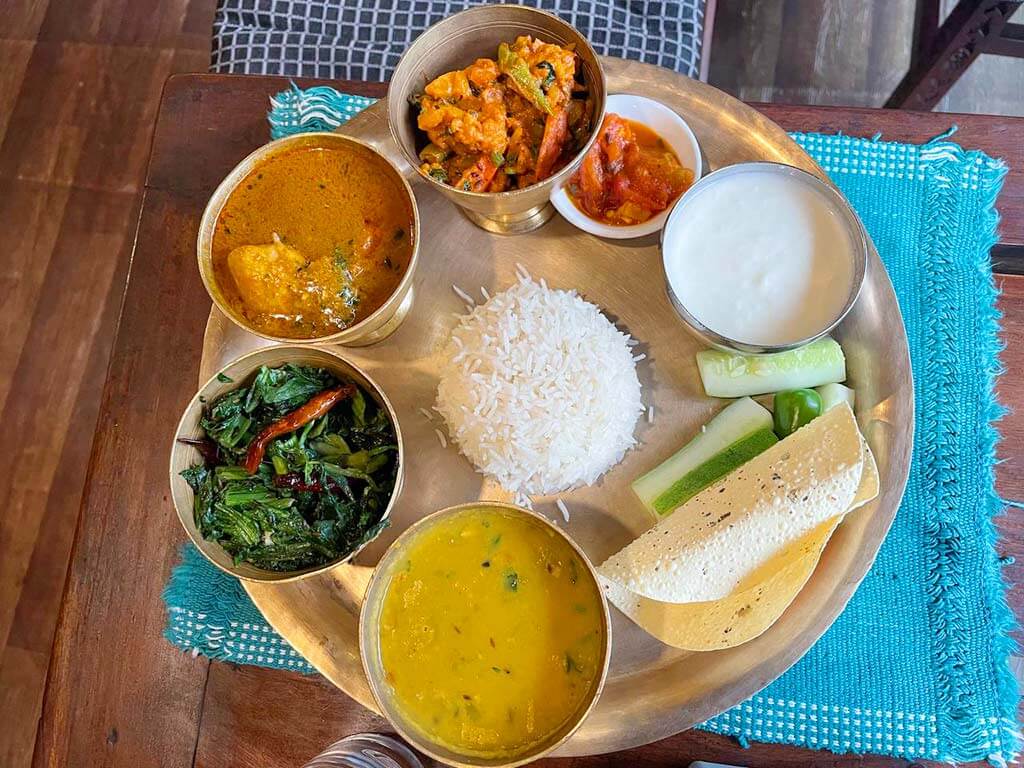
Dal Bhat is cooked at least twice daily in almost every Nepali household, with the tarkari substituted for meat and fish items. Condiments are also often included with the dish, with modest portions of spicy pickles (Achaar), fresh or fermented. You’ll often hear our Indian neighbours making a similar dish called dal bhat loncha, where their loncha (achaar or pickle) takes precedence over the tarkari.
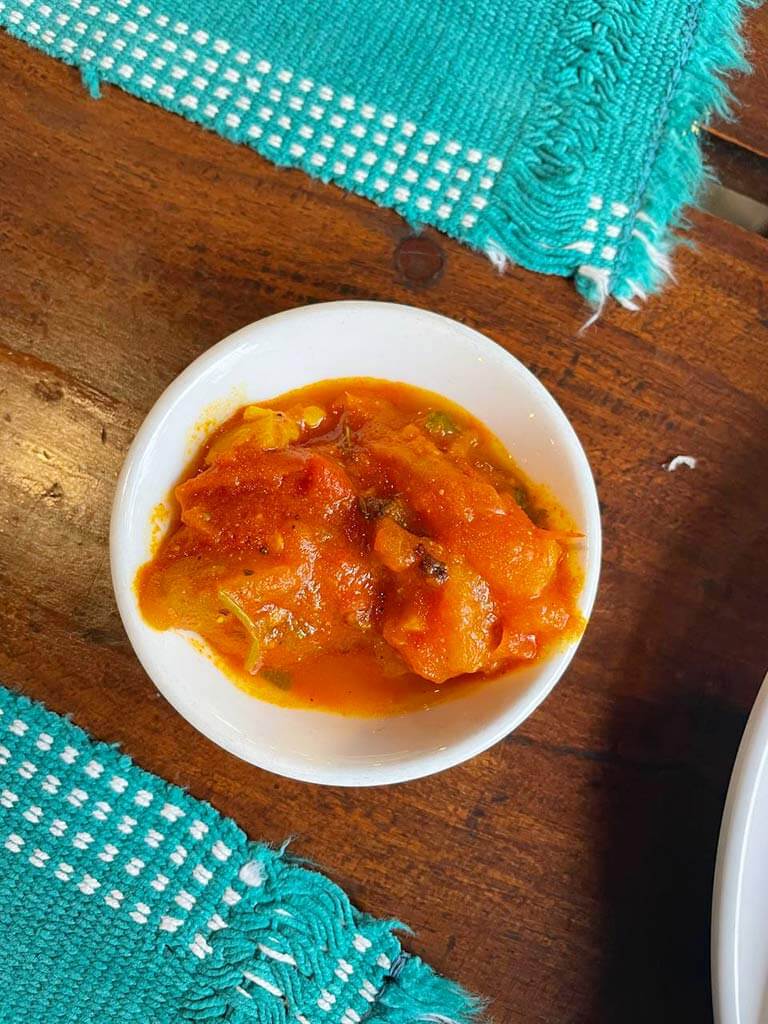
In the Himalayas, achar varieties primarily consist of dried mustard greens known as ‘gundruk ko achar’ and radish known as ‘Mula ko achaar.’ But the condiments aren’t restricted by any limitations, and there is a wide range of achaar available with numerous variations.
Likewise, other options also include sliced lemon (Nibuwa) or lime (Kagati) with fresh green chili (Hariyo khursani) and fried papad (Thin, crisp disc shaped food).
Dhindo is also another traditional Nepalese dish that sometimes can be substituted for rice. It is made by steadily combining flour with boiling water while whisking constantly. Despite being a staple diet in Nepal, dhindo was formerly seen as a lower-status dish than rice.
However, the addition of dhindo on urban restaurant menus had corresponded with an increase in the food’s prestige, which could be attributed to a shift in opinion of Nepal’s indigenous crops, which are now acknowledged for their nutritious value (Sort of like how ratatouille was considered a “pheasant dish” before the movie came out).
Dal Bhat – The Best Meal for Trekking in Nepal
As mentioned, Nepalese dal bhat is made of white rice (Bhat) and lentils (Dal), and it is usually served with vegetable curry (Tarkari), a variety of spicy vegetables (Pickles), and greens (Sak/sag). It is enjoyed with papad in a large metal tray and complemented by the fiery twinge of spicy condiments.
Red lentils are commonly used in dal bhat; however, yellow and brown lentils can also be utilized. A typical plate of the cuisine can include up to eight or nine side dishes, such as the vegetable curry, the fermented pickle (Mostly made from Gundruk), cucumber and onion salad, spinach, local meat of chicken or mutton (in many places, paneer is also available, suitable for vegetarians), local fish, yogurt (Churned from locally sourced milk), and many more depending on where you are eating. Typically, the “Thakali Set,” which comprises all of these dishes, is the most popular.
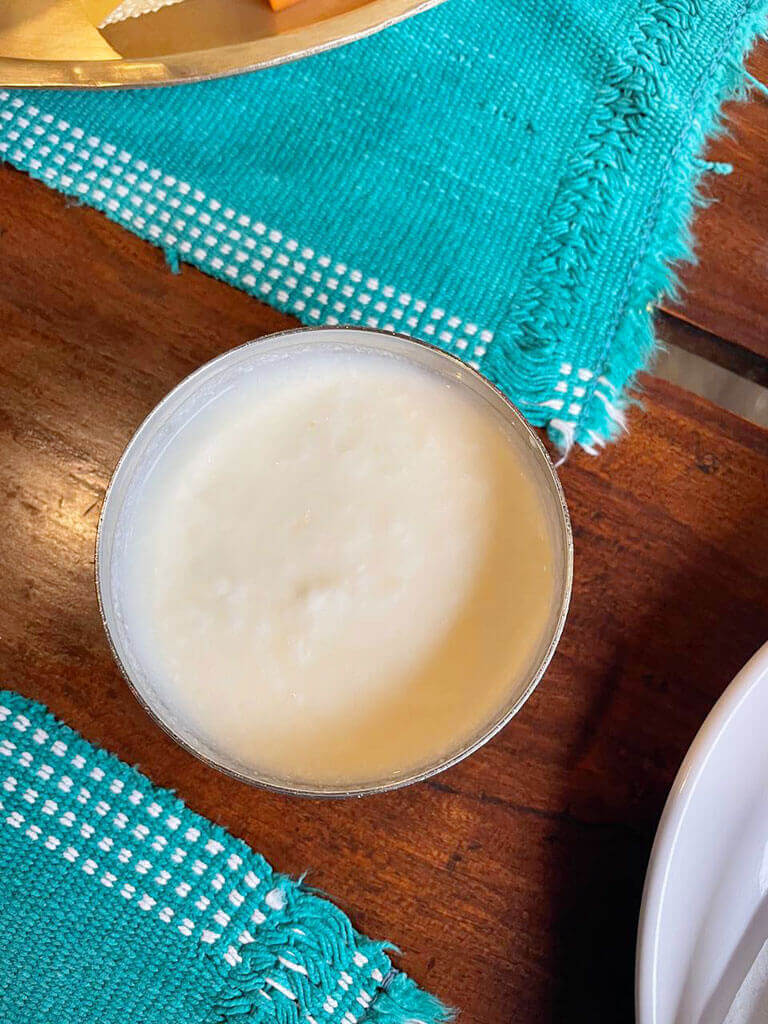
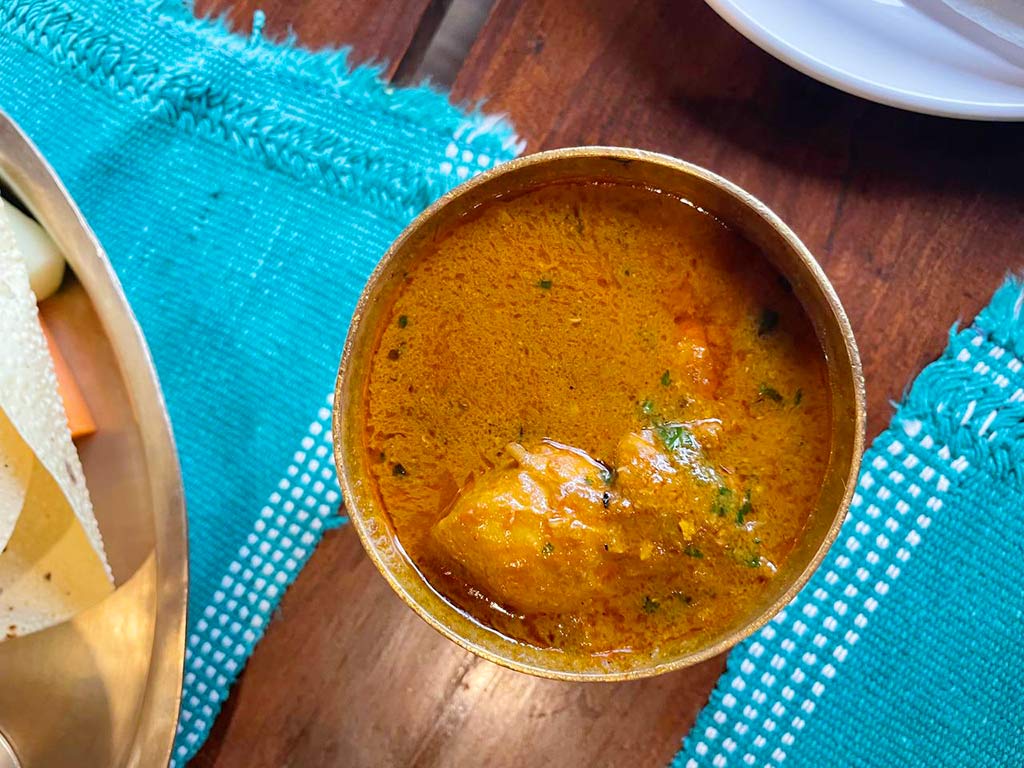
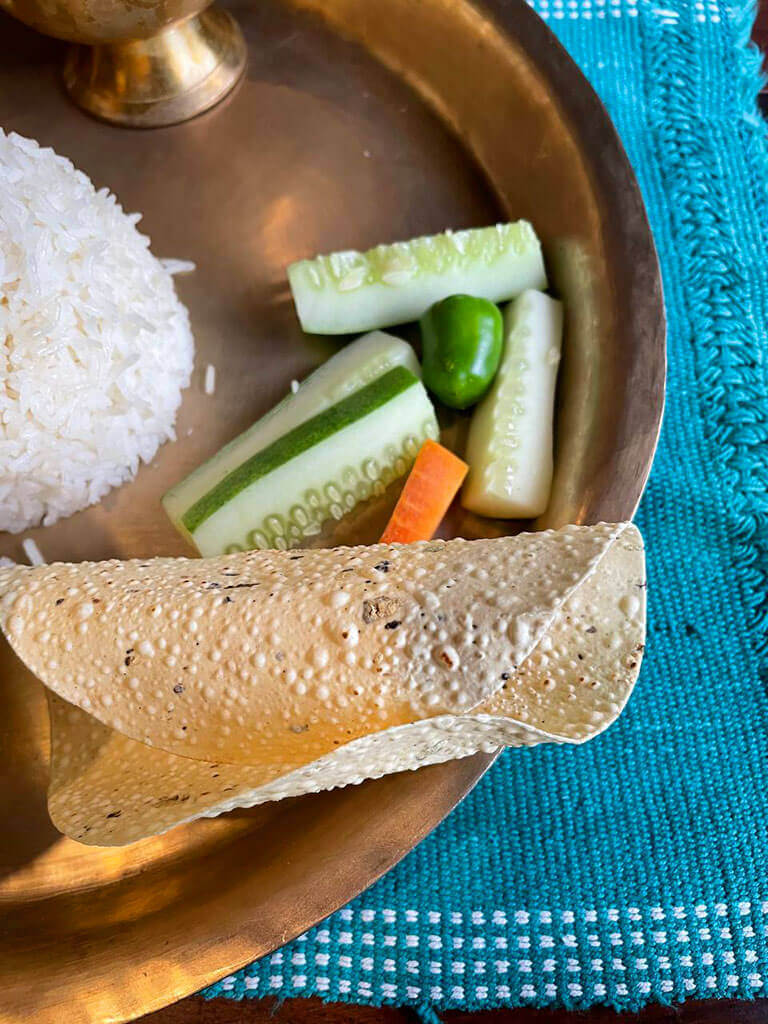
Dal Bhat is usually served twice a day, once for lunch and once for dinner. The meal’s substantial amount of nutrients, carbohydrates, and energy make it one of the most appropriate dishes for trekkers. It keeps you full and provides you with the energy needed to scale up and down the hilly terrain of northern Nepal without feeling complete exhaustion.
Due to a scarcity of land suitable for irrigated rice paddies in the Himalayas, other crops can sometimes supplement or replace rice. Wheat is transformed into unleavened flatbread (Called roti or chapati). Other popular staple porridge-like grains that can be substituted for the dish also include maize (Makai), buckwheat (Fapar), barley (Jau), and millet (Kodo/aataa).
Much like condiments, the tarkari can similarly be made with a variety of options, such as spinach (The most popular leafy vegetable for any rice dish) and fresh greens (Mostly spring onions, romaine lettuce, and mustard greens, along with coriander that grow on the Himalayan foothills).
Fermented and dried greens (such as gundruk or sinki) are the most popular condiments available in the mountains, while white radish (Mula) achaar is also quite popular among the locals. However, the essential vegetable would be the king of all vegetables, the potato (Alu). The mountain potato of northern Nepal gives a sweet flavor and is packed with vitamin C and potassium. In like manner, green beans (Simi), tomatoes (Golbheda), cauliflower (Kauli), cabbage (Bandhakopi), pumpkin (Farsi), and other ingredients are also used for the tarkari.
Most places that serve Dal Bhat along trekking routes in Nepal usually also have the option of meat or fish as a substitute for vegetables. Chicken and mutton are most prevalent and are usually prepared in a soup base. Moreover, the locals also use the rice and grains for fermentation and convert them into alcoholic beverages that help endure the cold temperatures in the snowy mountains. Sometimes, Dal Bhat is complimented with a ghee dab drizzled on top.
After a full meal of Dal Bhat, trekkers can enjoy a cup of warm butter tea and be fully ready and energized for the day’s trek. The best part is that most places serve second, third, and even fourth servings of rice without any extra charge.
Dal Bhat Preparation Recipe – The Nepalese Method
The dish’s essence can be divided into three core components: rice, lentils, and vegetables. First off, we can start prepping the dish by preparing the rice. Now, the thing about rice is that it doesn’t require any elbow grease; it is perhaps the most accessible component of the dish to prepare ( Although it can be a bit tricky to prepare for the first time if one does not have prior experience eyeballing the amount of water to add for nonsticky rice).
Rice can be cooked either in a pressure cooker or a rice cooker. The fascinating thing about using a pressure cooker for cooking rice is that you use less water. Since the water evaporates during the entire cooking time in a conventional covered pot, a large amount of water is required to compensate for this loss. When a pressure cooker reaches pressure, it creates a sealed atmosphere that prevents additional evaporation. So, regardless of how much rice you cook, you simply need to add enough water to equal the rice volume + ¼ cup.
Method I – Cooking Rice in a Pressure Cooker
Step 1: Start with 1 cup long-grain white, jasmine, or basmati rice in a fine-mesh strainer. Wash the rice in water until clean.
Step 2: Move the washed rice to a pressure cooker and add 1&1/2 tsp salt, if desired. Place the pressure cooker on the stovetop. Add 1 cup of water. Put on the pressure cooker lid, and turn the stove on.
Step 3: Cook the rice for 3 minutes on high pressure, remove from heat, turn the stove off from the pressure cooker, and allow the pressure to release for about 10 minutes naturally. After the pressure is completely gone, open the pressure cooker lid and check the consistency of the rice. (If the rice is sticky, then it means you added a little too much water. If the rice is relatively firm and rigid, there isn’t enough water. You can add more water to the rice and let it cook further for a couple of more pressure cooker whistles for the rice to turn soft).
Step 4: Finally, remove the rice from the pressure cooker, fluff with a fork, and serve.
Method II – Cooking Rice in a Rice Cooker
Step 1: Rinse the rice grains with cold water, as mentioned above.
Step 2: Pour 1 cup of rice in the rice cooker bowl.
Step 3: Add 1 ½ cups of water.
Step 4: Plug in the rice cooker and close the lid. The rice will start cooking automatically. Usually, most rice cookers in Nepal come with two labels “Cooking” and “Keep Warm.” When the light on “Cooking” is on, the rice is being cooked in the cooker. When rice finishes cooking, the rice cooker will switch to “Keep Warm” (After approx 15 minutes, but it varies from one rice cooker to the next).
Step 5: Allow the rice to stand for 5 minutes with the lid closed before serving.
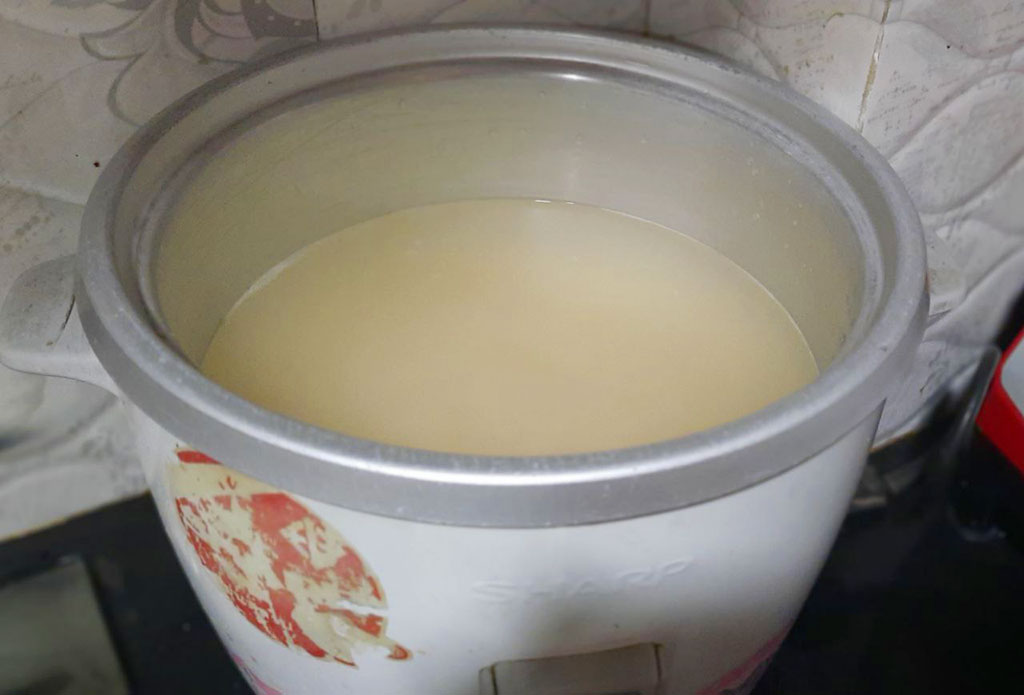
Cooking Lentils
Secondly, the next step of the dish involves preparing the lentil. Ideally, you can cook the rice and the lentil simultaneously, each on top of the two stovetops. The best way to cook the lentil is in a pressure cooker. Lentils come in a variety of hues and have numerous health benefits. Lentils are the world’s oldest cultivated bean, so it’s no surprise that they’ve become a global staple, from Nepal to the Middle East, Europe, and the Americas.
Furthermore, lentils contribute a high fiber, high protein aspect to various dishes besides Dal Bhat. Lentils also cook faster than dry beans and do not need to be soaked before cooking due to their small size. They are incredibly adaptable and affordable, making them a readily available source of high-quality protein.
Usually, red lentils are used for Dal Bhat, but mostly, any other available lentil is suitable, such as yellow, chickpea lentils, or even black (Called Black Beluga lentils). In many cases, people combine lentil varieties and cook them together for a richer flavor.
Lentil Ingredients and Cooking Instructions
The dal includes all of the characteristics of Nepalese cuisine, from garlic, onion, and ginger, to coriander, turmeric, and red chili pepper. Essential ingredients for a delicious dal include ghee or oil, onion, cloves of garlic, a piece of ginger, crushed coriander seeds, red chili powder, turmeric, red/yellow/black lentils washed, water, and chopped cilantro. This dish is simple to prepare.
Step 1: Rinse your lentils until the water is clear and keep them aside.
Step 2: In the pressure cooker, heat ghee or oil and sauté the onions until transparent but not brown.
Step 3: Lower the heat and mix in pinches of garlic, ginger, coriander seeds, red chili powder, and turmeric. Stir for about 3 minutes to mix.
Step 4: Put the red lentils in and mix on low heat.
Step 5: Add water (Usually, the amount of water depends on how much dal you want, but ideally, about 2 and a half cups of water are used. You can eyeball it too; just make sure that you add enough not to let the lentil burn)
Step 6: Bring the water to a boil, then add the salt. Finally, put on the pressure cooker lid and let it cook until 6 to 7 whistles. Like rice, after the 6th whistle, you can turn the heat off and let the pressure out naturally. Before serving, you can check if the lentil is cooked to your liking or not. If it is firm, you can add a bit more water and let it cook further as well.
Step 7: Remove from the fire and stir in the fresh cilantro. Enjoy.

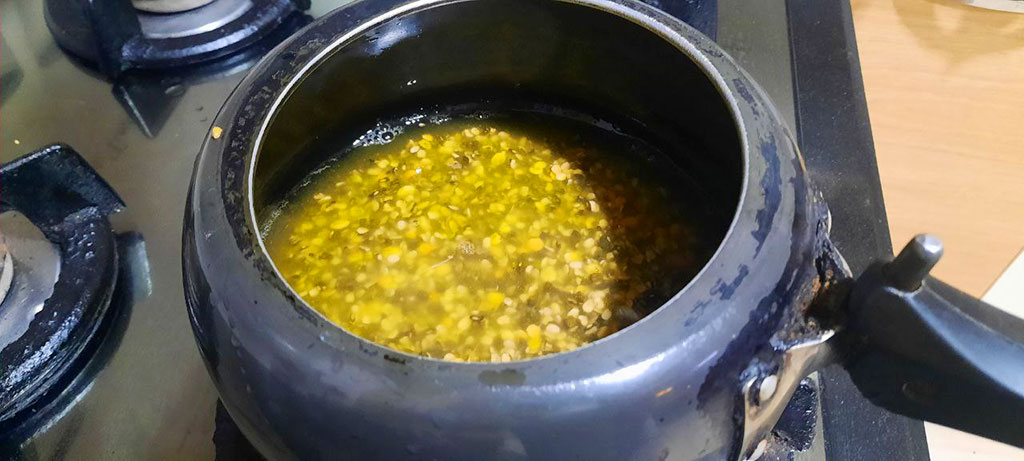
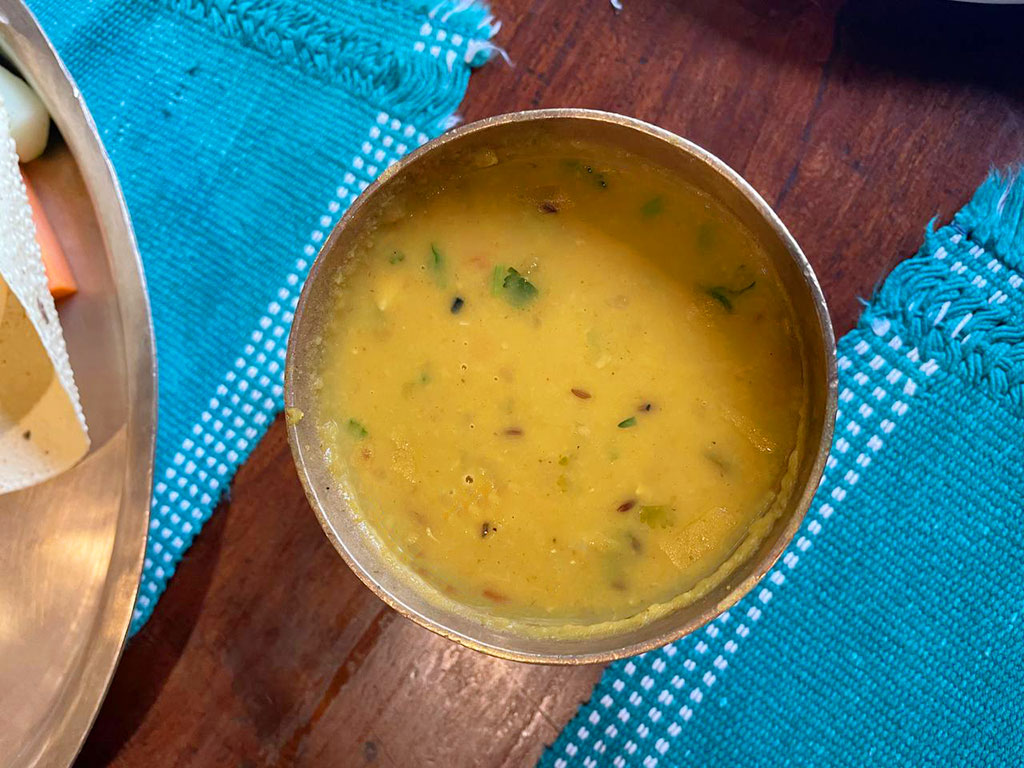
Cooking the Vegetable and the Meat
As aforementioned, a wide variety of vegetables can be served with Dal Bhat. However, the preparation for almost all of the vegetables is, more or less, the same. Vegetables like leafy greens require less time for preparation, while others, like the potato or beans, can require a longer time. Nevertheless, the vegetables can be prepared in any essential way, with any primary method of food preparation.
The same goes for the meat prep as well. Chicken takes significantly less time to cook, while mutton and other meat varieties can take longer. Nepali cuisine uses condiments and spices extensively, so most vegetables and meat dishes have a beautiful twinge of garlic, ginger, cumin, cinnamon, thyme, coriander, and many other aromatic spices.
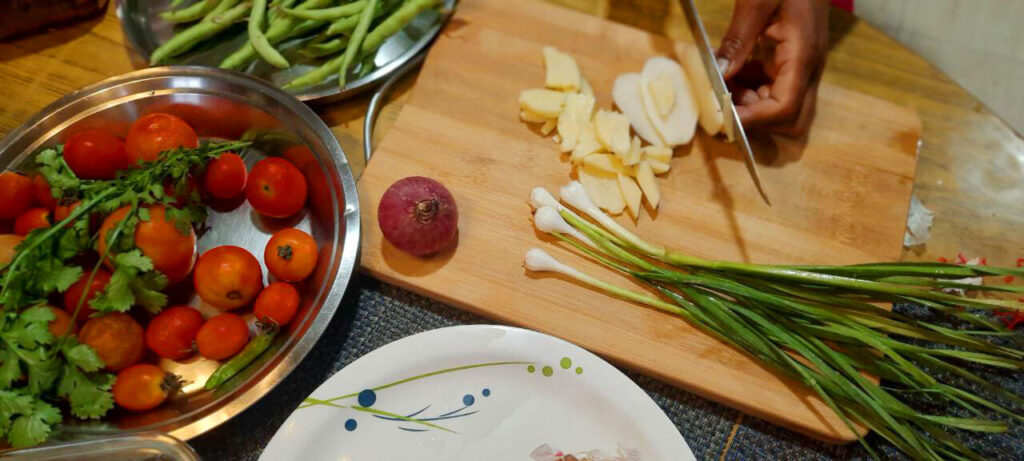
Preparing the Ghandruk Pickle
You need fresh green leaves from mustard, turnip, radish, or cauliflower plants. When you’ve got the desired amount, cut the leaves into uneven pieces (Don’t make them too little) and set them aside to wilt for a day or two. You can also add radish or turnip roots if you wish, but be sure to smash them with the leaves. Then, place them in an airtight container (Wooden, earthenware, or glass jar).
Allow the container to stand in a sunny location for four to seven days or until the leaves are organically fermented due to lactic acid bacteria. After the fermentation phase is finished, spread the contents of the container out on a thin plastic sheet and allow it to sun-dry for a few days before storing it in a container of your choice. Your gundruk is now ready to be used, and it goes exceptionally well when taken with Dal Bhat.

Conclusion
Dal bhat (and tarkari) is Nepal’s most prominent staple dish, and during long treks in the beautiful Himalayas of Nepal, they are the ideal choice for a fulfilling meal. Preparing Dal Bhat does not take much time either, and it can be prepared easily with the right ingredients (Detailed instructions are below). There is no other authentic Nepali cuisine that defines Nepal’s beauty and hospitality like the Dal Bhat.
There are other popular local snacks and food in Nepal too. Want to know what other popular Nepali snacks look like and perhaps try them in authentic places? Read our guide for the best local foods of Kathmandu and where to find them.
About The Author: Yen from Travel Outset
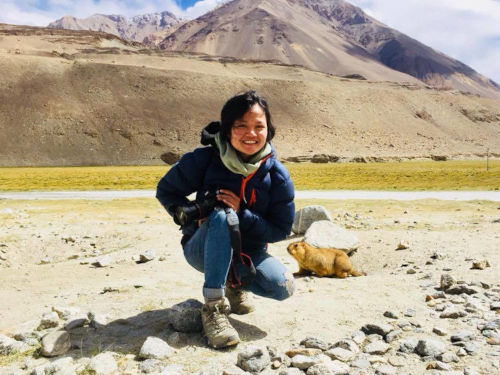
Yen’s roots are in Central Vietnam although she studied in Ho Chi Minh and worked in Hanoi covering both ends of the country! Working with the Animal Asia Foundation, Yen turned vegetarian so has her pulse on what vegetarian travellers want. She backpacked around Europe while based in Ireland and is currently living in Nepal with Pradeep and their two dogs. “Our dogs are part of our travel team and we take them trekking through Nepal. Find Yen on Travel Outset and also on Facebook, Twitter and Instagram.

Dal Bhat Tarkari, The Nepalese Superfood!
Click the stars to add your rating! Left you don’t like it, right you love it!
Ingredients
Rice (Bhat)
- 200 grams Rice
- 250 ml Water or 350 ml
- 1.5 teaspoon Salt
Dal
- 200 grams Lentils Red or Yellow or Black Lentils – Washed
- 2 Tablespoons Ghee (Indian clarified butter) Or Oil
- 1 Onions Finely Chopped
- 2 Garlic Cloves or Garlic Flakes Minced
- 2 Ginger Grated
- 1 teaspoon Coriander Seeds Crushed
- .5 teaspoon Red Chili Powder
- .5 teaspoon Turmeric Powder
- 750 ml Water
- 1 teaspoon Salt
- 2 Tablespoons Cilantro Chopped
Ghandruk Pickle
- 100 grams Mustard Leaves Cut in pieces
- 100 grams Turnip Leaves Or Radish Leaves. Cut in pieces
- 100 grams Cauliflower Leaves Cut in pieces
- Turnip Roots Or Radish roots (Optional)
- 3 Red Chilies
- 1 teaspoon Cumin (Jeera)
Tarkari (Vegetable Curry)
- 1 Tablespoon Oil
- 4 Tablespoons Spring onions Finely Chopped
- 2 Garlic Cloves or Garlic Flakes Finely diced
- 1 teaspoon Ginger Grated fine
- 2 Red Chilies Finely Chopped
- 100 Grams Potatoes (Aloo) Cut into small pieces
- 100 Grams Green Beans (Simi) Chopped
- 100 Grams Cauliflower (Kauli) Chopped
- 100 Grams Cabbage (Bandhakopi) Chopped
- 100 Grams Red Pumpkin (Kaddu) Chopped (Optional)
- 50 Grams Spinach Chopped (Optional)
- 50 Grams Romaine Lettuce Chopped (Optional)
- 50 Grams Mustard greens Chopped (Optional)
- 2 Tomatoes (Golbheda) Finely Chopped
- 2 Tablespoons Fresh Coriander Leaves Finely Chopped
- 1 teaspoon Salt To taste
- .5 teaspoon Red Chili Powder
- 1 teaspoon Cumin Powder Ground
- 1 teaspoon Garam Masala
Instructions
Method I – Cooking Rice in a Pressure Cooker
- Wash the long grain rice in a mesh strainer in cold water until clean.
- Add the rice to a pressure cooker with salt and 250 ml of water.
- Place the pressure cooker on the stovetop, put the cooker lid, and turn the stove on.
- Cook the rice for 3 minutes on high pressure, remove from heat, and turn the stove off. Allow the pressure to release for naturally ( about 10 minutes).
- After the pressure is completely gone, open the pressure cooker lid and check the consistency of the rice. Fluff with a fork, and serve.
Method II – Cooking Rice in a Rice Cooker
- Rinse the rice grains with cold water in a mesh strainer.
- Pour 200 grams rice into the rice cooker bowl and add 350 ml of water.
- Plug in the rice cooker and close the lid. The rice will start cooking automatically for about 15 minutes.
- Allow the rice to stand for 5 minutes with the lid closed before serving.
Cooking Lentils
- Rinse your lentils until the water is clear and keep them aside.
- In the pressure cooker, heat ghee or oil and sauté the onions until transparent but not brown.
- Lower the heat and mix in pinches of garlic, ginger, coriander seeds, red chili powder, and turmeric. Stir for about 3 minutes to mix.
- Put the red lentils in and mix on low heat.
- Add water and bring the water to a boil, then add the salt.
- Finally, put on the pressure cooker lid and let it cook for 6 to 7 whistles.
- Remove from the fire and stir in the fresh cilantro. Serve and enjoy.
Making Ghandruk Pickle (A Week Earlier)
- Cut into uneven pieces, the fresh green leaves from mustard, turnip, radish, or cauliflower plants and set them aside to wilt for a day or two.
- Place them in an airtight container (wooden, earthenware, or glass jar) and place the container in a sunny location for four to seven days until the leaves are organically fermented due to lactic acid bacteria.
- Then spread the contents of the container out on a thin plastic sheet and allow it to sun dry for a few days before storing.
- Your gundruk is now ready to be used, and it goes exceptionally well when taken with Dal Bhat.
Cooking Tarkari
- Heat oil in a pan and add the chopped spring onions, garlic, ginger and red chilies. Cook till onions are lightly browned.
- Add the cut veggies and mix well. Cover with a lid and cook till the veggies are properly cooked.
- Add the chopped tomatoes and coriander, ground cumin, red chili powder and salt. Cover and cook till tomatoes turn soft.
- Lastly, add the garam masala, mix well, and cook for a few more minutes.
- Serve hot with dal and bhat.
Please click to rate the recipe! Left you don’t like it, right you love it!
Notes
- You can cook the rice in a pressure cooker or an instant pot.
- You can use black or yellow lentils too for this dal, although red is the most popular.
- For the Tarkari, you do not need to use all the veggies, you can use just 3 to 4 as well.
- The green leaves for the Ghandruk pickle can be cut unevenly.
- If making Gundruk pickle, make it a week in advance. Otherwise, you can substitute with any other pickle or achar of your choice.
Nutrition (Per Serving)
Disclaimer: Nutrition Information per serving is estimated by a third party software based on the ingredients used, and is for informational purposes only. It will vary from product to product, based on methods of preparation, origin and freshness of ingredients. Please consult the package labels of the ingredients you use, or chat with your dietician for specific details.
This printable recipe card is for home use only. For more recipes head over to AbbysPlate.comIf you want our traditional East Indian recipes on hand, the Abby's Plate Cookbook Series books are available online or in-store in most countries.
Latest Book:
East Indian Celebration
Festive Recipes from Abby's Plate
See the full list of books here!
Other Recipes You Might Like
- Easy Salli Eggs Fry – Sali Par Eedu Recipe
- How To Fry Kingfish Indian-Style? Surmai Masala Fry
- Kachumber – Indian Onion-Tomato-Cucumber Salad
- How To Make Paneer? – Indian Cottage Cheese
- Moong Dal Halwa – Indian Mung Bean Dessert

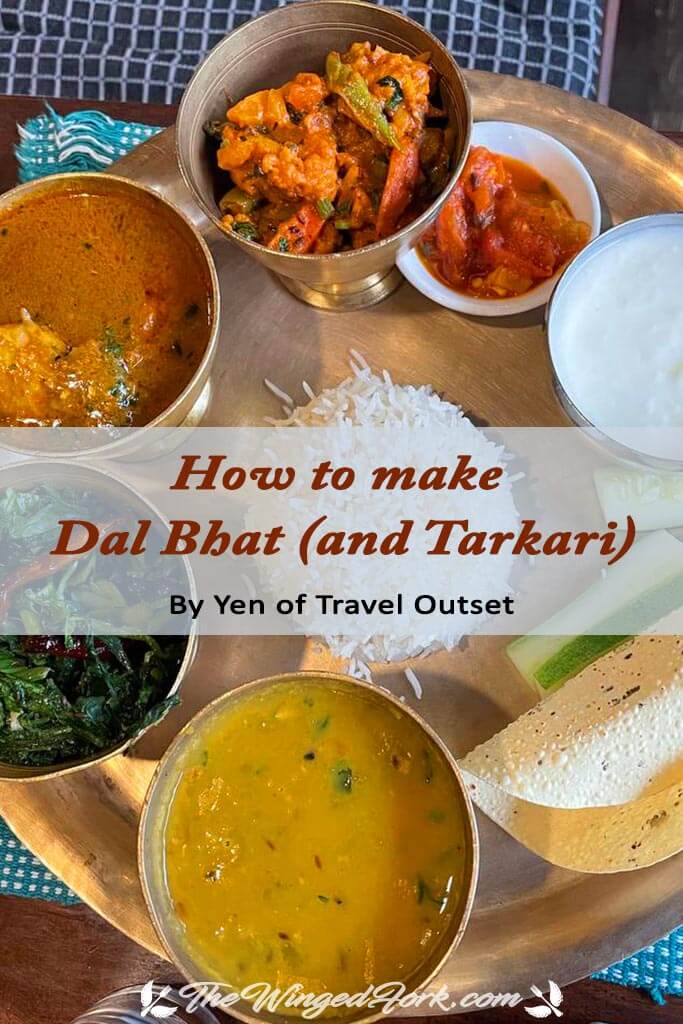








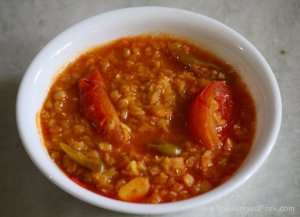
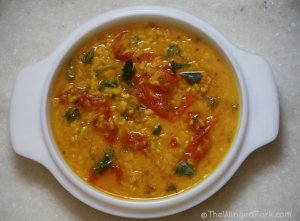
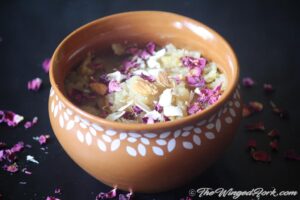
Very much enjoyed reading about this dish and how it is actually eaten in Nepal. I wish I had read it two days ago as I would have ordered it at a lovely Nepalese restaurant in Golden, CO, called Sherpa. I may try this soon, and appreciate the detailed instructions using the pressure cooker and rice cooker. I have both and am not yet adept with them. I love dal and make it occasionally, now have a new way to serve it!
Thanks Jen! Glad you liked it! Do come back and let me know if you cooked it all right!